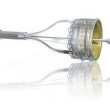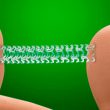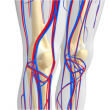The systematic reduction of inefficiencies in the catheterization laboratory (such as the improvement of lab room start times and room turnaround times) can definitely improve the productivity of a Department of Interventional Cardiology without forcing its members to stay in the facilities longer. As a matter of fact, work can be finished even faster with...
WIN TAVI: The Largest Female TAVR Registry So Far
Courtesy of Dr. Carlos Fava. In most randomized or observational studies, women comprise more than 50% of patients undergoing TAVR, and they have showed better evolution, compared against surgery. The main differences between men and women with severe aortic stenosis are that women have smaller annular dimension, shorter distance to coronary ostia, smaller peripheral arteries, and...
Lotus Valve in Real Life Patients: the near total lack of leaks is its greatest strength
Even though the incidence of complications in transcatheter aortic valve replacement (TAVR) have significantly decreased, there is one in particular that remains a concern since, when mild, it is associated to increased events rate. This complication is prosthetic paravalvular leak , which happens between the native annulus and the stent. The Lotus valve, completely repositionable, uses a...
What Is the Long-Term Outcome of Lesions Deferred Using FFR/iFR?
The presence of inducible ischemia is an essential prerequisite to obtain clinical benefits from revascularization through angioplasty. In that sense, the measurement of fractional flow reserve (FFR) is the gold standard as regards invasive methods assessing the functional significance of epicardial artery stenosis. As opposed to FFR, the measurement of the instantaneous wave-free ratio (iFR)...
The Use of Intravascular Imaging to Guide PCI Reduces Cardiovascular Death Risk, Compared to Angiography
Intravascular imaging, which includes ultrasound intravascular (IVUS) and optical coherence tomography (OCT), shows live details that better characterize post stenting plaque, anatomy and outcomes. The already familiar limitations of the angiography has lead us to think that IVUS and OCT could improve clinical outcomes; however, we should still find the evidence to support this claim. To shed some...
BVS: Safe and Effective in the Infrapatellar Area
Courtesy of Dr. Carlos Fava. Drug-eluting stents (DES) have shown mid-term benefit in lesions below the knee (BTK) by reducing the rate of acute occlusion and restenosis in type A and B lesions. However, failure to recover the self-regulatory functions of the local vessel could hinder future revascularization. Drug-eluting bioresorbable scaffolds (BVS) could be a solution to this problem....
Zilver PTX: Maintains efficacy in real life most challenging lesions?
Original Title: Zilver PTX Post-Market Surveillance Study of Paclitaxel-Eluting Stents for Treating Femoropopliteal Artery Disease in Japan 12-Month Results. Reference: Hiroyoshi Yokoi et al. J Am Coll Cardiol Intv. 2016;9(3):271-277. This multicenter prospective study carried out in Japan assessed the paclitaxel eluting stent Zilver PTX in an unselected real world population very different to...
Bivalirudin could be beneficial in peripheral PCI
Original Title: Bivalirudin Is Associated with Improved In-Hospital Outcomes Compared with Heparin in Percutaneous Vascular Intervention. Observational, Propensity –Matched Analysis From the Premier Hospital Database. Reference: Carey Kimmeslstiel, et al. Circ Cardiovasc Interv. 2016 Jan;9(1). Courtesy of Dr. Carlos Fava Lower limb vascular interventions are increasing in number and bleeding is one of its most...
Atherectomy in Infrapopliteal Lesions with Good Results at One Year
Original Title: One-Year Outcomes Following Directional Atherectomy of Infrapopliteal Lesions: Subgroup Results of the Prospective, Multicenter DEFINITIVE LE Trial. Reference: Aljoscha Rastan, et al Journal Endovascular Therapy 2015;22:839-846 Courtesy of Dr. Carlos Fava Infrapopliteal peripheral vascular disease continues to rise, especially in patients with diabetes and kidney failure, usually presenting diffuse and fairly calcified lesions. Removing...
High doses of radiation also in peripheral procedures
Original title: Patient radiation exposure during percutaneous endovascular revascularization of the lower extremity. Reference: Einat Segal et al. Journal of Vascular Surgery. Article in press. Percutaneous endovascular revascularization is emerging as the first line treatment for peripheral artery disease for both intermittent claudication and chronic critical limb ischemia. Radiation doses for these interventions, usually prolonged, have not been...









